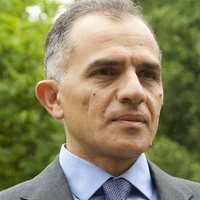Harith Alani

Director of the Knowledge Media institute at The Open University, UK. Leads the Social Data Science interdisciplinary research group.
Location United Kingdom
Activity
-
@NicoleNguyen The 3200 limit is imposed by Twitter, unfortunately. We use the Twitter official programming interface to collect the data, and they limit the number of Tweets you can collect to 3200. There are other methods to collect more, such as screen scraping, but they are not legitimate and go against Twitter's terms and conditions
-
@AnnaRahikainen The total reliability and unreliability scores are only indicative. The value is more in the detail MisinfoMe provides, such as the list of Tweets that were found to be unreliable and the sources of information that fed into this assessment
-
@andreasRomar That's true. We are currently researching how best to issue these corrections. Style and timing matter a lot.
-
Social media platforms can also do a lot more to support, encourage, and publicise such tools.
-
Every technology can be misused, unfortunately. It is worth noting that the misuse of social media for political gains is a worldwide problem. There are many examples of that in the US, UK and many EU countries.
-
@NicoleNguyen We all have our "echo chambers" which we trust. The key is that we acknowledge the fact that anyone and everyone could believe in some information that is false. If we admit to this human fallibility then we will do more to check the information we receive
-
@NicoleNguyen One good way of telling if a fact-checker is reliable is to check if they are a member of the International Fact-Checking Network https://ifcncodeofprinciples.poynter.org/signatories
-
Precisely, many who tend to share misinformation distrust fact-checkers. It doesn't help that there are fake fact-checkers as well. One way of determining if a fact-checker is reliable is to check if they are a member of the International Fact-Checking Network https://ifcncodeofprinciples.poynter.org/signatories
-
Harith Alani replied to Anna Rahikainen
@AnnaRahikainen Exactly. They are harder to detect by people as well as by machines. Some newspapers use these techniques to clickbait viewers into reading their articles, by shrouding a small piece of truth with subjective and biased opinions or simply by moving and shrinking different parts of the story to put more emphasis on one thing and not the other
-
Harith Alani replied to Anna Friedler
and the believers in those conspiracy theories are far more resistant to corrections than others
-
Harith Alani replied to Petr Svoboda
@PetrSvoboda Misleading and manipulated content are also harder to reject outright since they tend to have a bit of truth albeit surrounded by false content.
-
I do the exact same thing. Question is what else we can do to reduce the impact of such misinformation. eg, we could be more active in circulating trusted information to counter the false information in circulation on the same social media platforms. Social media platforms could do a lot more to reduce the visibility of those who spread misinformation and...
-
misinformation sometimes is used as a political tool. see this article https://www.theguardian.com/world/2023/feb/15/revealed-disinformation-team-jorge-claim-meddling-elections-tal-hanan
-
@NicoleNguyen Unfortunately, many do use social media for news, often without even realising it. Social media platforms don't do enough to stop unreliable news/info circulating around.
-
@NicoleNguyen Unfortunately, many people still get their news (sometimes not deliberately) from social media. But of course, there are many other online news outlets that also spread unreliable, misleading or completely fake content. Social media amplifies them.
